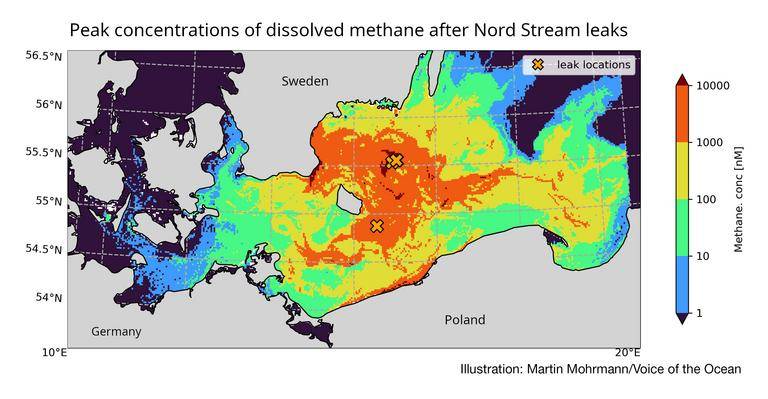Methane from the Nord Stream pipelines destroyed in September 2022 spread over a large part of the southern Baltic Sea and remained for several months, according to a new study by researchers from the University of Gothenburg and the Voice of the Ocean research foundation.
Much of the methane gas from the Nord Stream leak rose directly to the sea surface and into the atmosphere. But some methane remained below the surface and was dispersed by ocean currents.
“The results of our measurements show that methane spread to large parts of the southern Baltic Sea, from the coast of Danish Zealand in the west, to the Polish Gulf of Gdansk in the east,” says Martin Mohrmann, a researcher at Voice of the Ocean, VOTO.
The Voice of the Ocean Foundation deployed gliders just outside the exclusion zone around the leaks to measure methane concentrations over a large area, all the way from the surface to the depths. They continued their measurements for three months after the spill.
To get the most robust estimations, they combined observations from the gliders with surface observations collected by the German research institute IOW from a ferry.
In the initial period following the pipeline explosion, methane levels in the waters were sometimes 1,000 times above normal. In some areas, abnormal concentrations of methane were measured several months after the release, before it was diluted, consumed by bacteria or escaped to the atmosphere.
“We estimate that over 14% of the entire Baltic Sea was exposed to methane levels that were at least five times above normal,” says Mohrmann.
The ocean currents transported the methane to 23 marine protected areas.
The results of the study are published in Nature Communications, along with two other studies that have mapped the impact of the Nord Stream emission on the atmosphere. The researchers from VOTO and the University of Gothenburg have used their measurements to create a robust model of how the methane was dispersed in the water.

